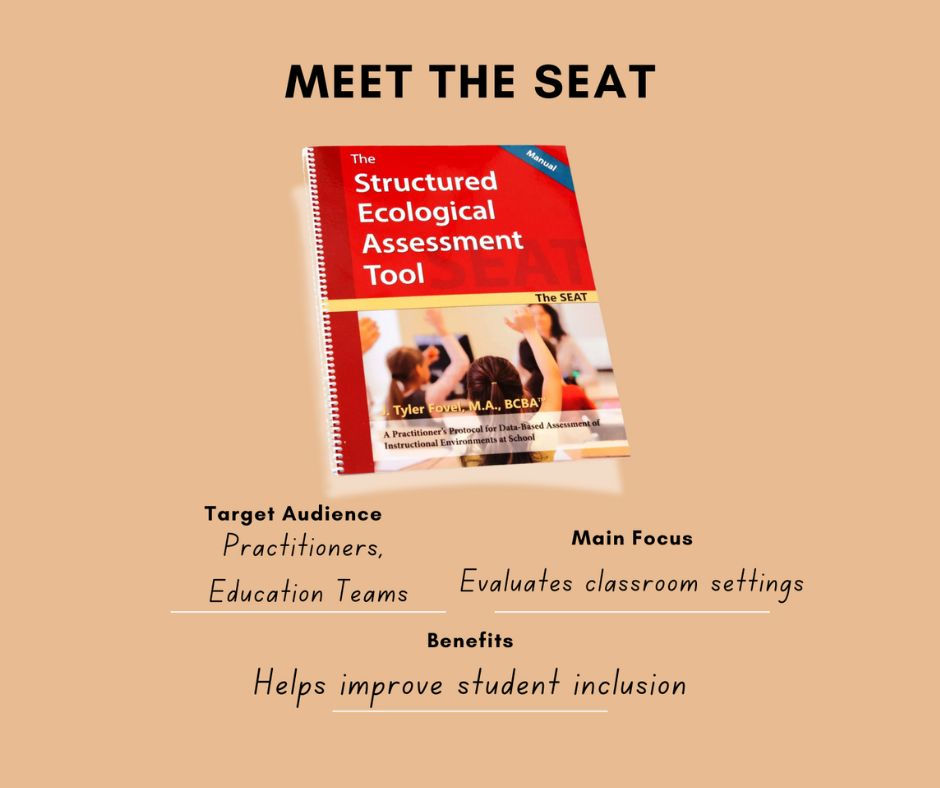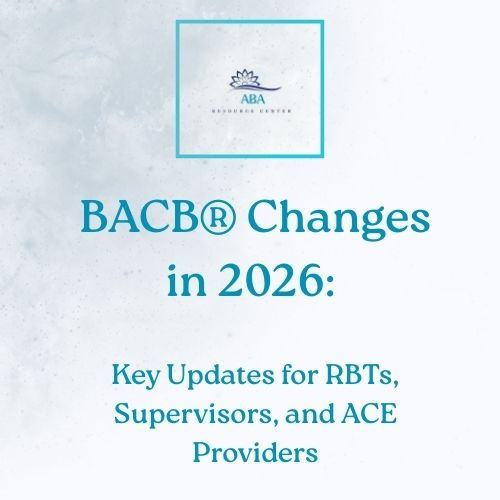What Is the SEAT Ecological Assessment? An Overview for ABA Professionals
- Ashleigh Evans (BCBA)
- Aug 13
- 3 min read
We're continuing our ABA Assessments Series with an overview of the SEAT Ecological Assessment.
The Structured Ecological Assessment Tool (SEAT) is a tool used in applied behavior analysis (ABA) and educational settings for identifying the function of challenging behaviors. This tool is beneficial for supporting educational teams in evaluating and designing inclusive learning experiences for students.
What is the SEAT Ecological Assessment?
The SEAT, developed by Tyler Fovel, a BCBA and author of the ABA Program Companion, offers clinicians and educators a systematic approach to conducting ecological assessments. It helps providers understand how their clients interact with their environment, including physical, social, and cultural factors, to better understand the context of their behavior. As we know, behavior is influenced by the environment. Because of this, it's critical to understand the impact that environmental factors have on a learner.
Components of the SEAT ABA Assessment
The SEAT assessment includes checklists, data sheets, and forms, including:
An ecological assessment checklist
A setting and student skill inventory and comparison
On-task behavior data sheet
Prompt and response data sheet
Ecological assessment class survey data sheet
What Setting Is the SEAT Used In?
The SEAT is most commonly used in educational settings, where behavior analysts and educators work together to identify what the student needs to succeed. It's especially helpful in classrooms that serve students with autism and other neurodevelopmental differences. However, SEAT can also be applied in clinical and home-based ABA programs to guide behavior intervention planning.
What is the Structured Ecological Assessment Tool Used For?
The Structured Ecological Assessment Tool is used to identify what students need to be successful, primarily in school. This tool evaluates the environment, pinpointing the skills needed for success, and then assesses the student's interactions with the environment.
Educators and clinicians use the SEAT to:
Support smooth transitions between programs
Pinpoint environmental factors contributing to off-task behavior
Identify reinforced skills in the environment to shape student success
The SEAT is commonly used with students who do particularly well in one subject or setting but struggle in others. It can be used as a component of a Functional Behavior Assessment (FBA), and in some cases, educational teams administer the SEAT prior to or instead of a full FBA. This approach helps identify skill deficits, environmental mismatches, or motivational barriers that may be contributing to the student's off-task behavior. In some situations, insights gained from the SEAT can guide effective intervention planning and may reduce the immediate need for a comprehensive FBA.
The Setting and Student Skill Inventory assesses which skills are needed for success in the learner's environment. Based on those results, the clinician or educator can assess and plan for:
Student placement
Instructional formats
Work performance
Visual supports
Response effort and opportunity
Rules and routines
Group activities
Correction and differentiation
Reinforcement
Why Use the SEAT
The SEAT ecological assessment offers several benefits for educational teams supporting diverse students, including:
Helps educators best support students as they transition between programs.
Leads clinicians to identify whether there's a skill deficit, a motivational deficit, or a behavior that has a longer history of reinforcement.
Allows teachers to identify and prevent off-task behaviors.
Supports consistent interventions by helping all team members understand why a student is engaging in a particular behavior.
Improves collaboration between teachers, therapists, and support staff through a shared framework and language.
Streamlines behavior intervention planning.
Enables improved student inclusion.
Where Can You Purchase the Structured Ecological Assessment Tool (SEAT)?
You can purchase a physical copy of the SEAT on Different Roads to Learning's website.
Setting the Stage for Success
The SEAT ecological assessment gives teams a structured way to uncover how the environment shapes student behavior, making it easier to design interventions that truly meet each learner’s needs. Whether used on its own or as a foundation for further assessment, SEAT supports inclusive practices, informed planning, and better outcomes for students.
Stay tuned for the next article in our ABA Assessments Series! Subscribe to our newsletter, so you don't miss out on updates from ABA Resource Center.
Related Articles:
Partnership & Transparency Disclaimer
The content we share on ABA Resource Center is reader-supported. This means that if you click on certain links and make a purchase, we may earn a small referral fee. Rest assured, we only recommend tools, resources, and services that we genuinely believe add value to the ABA field.








Comments